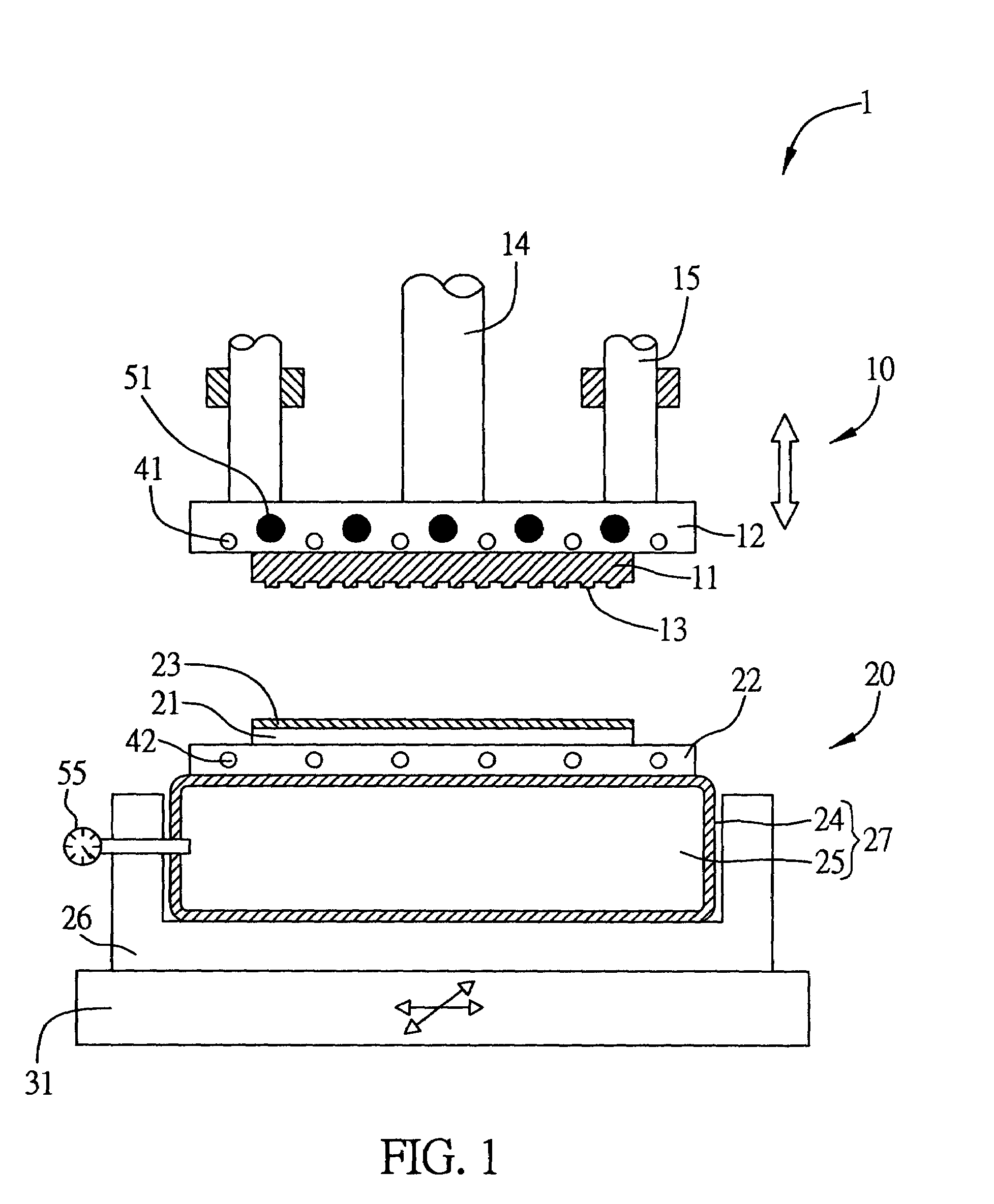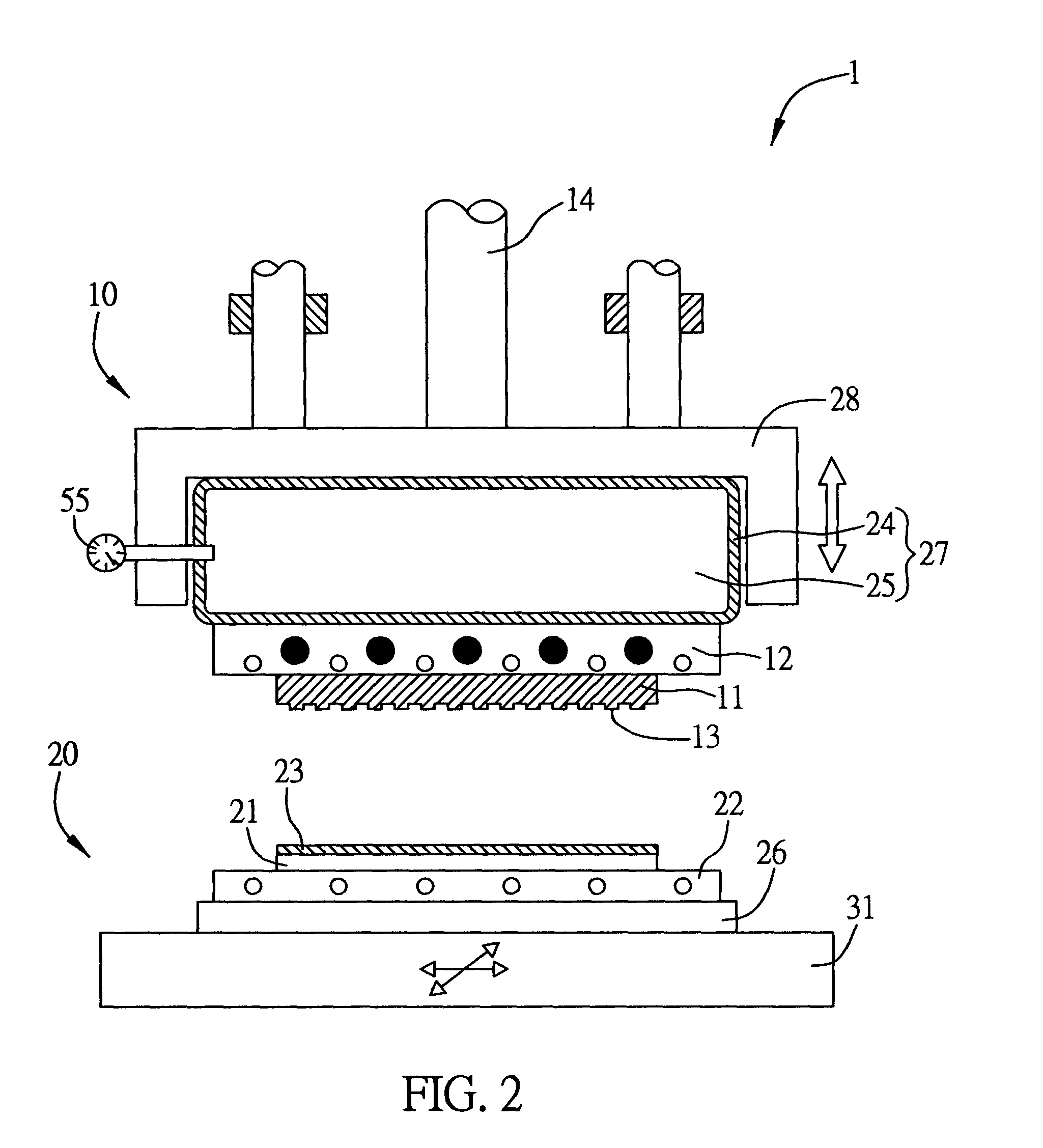Parallelism adjustment device
a technology of parallel adjustment and adjustment device, which is applied in the direction of photomechanical equipment, instruments, applications, etc., can solve the problems of inability to implement nano-scale features in mass production, inability to achieve mass production, and inability to achieve the effect of achieving high degree of freedom, instant responsiveness, and enhanced horizontal alignment in the imprinting process
- Summary
- Abstract
- Description
- Claims
- Application Information
AI Technical Summary
Benefits of technology
Problems solved by technology
Method used
Image
Examples
Embodiment Construction
[0028]Wherever possible in the following description, like reference numerals will refer to like elements and parts unless otherwise stated.
[0029]FIG. 1 depicts a parallelism adjustment device 1 applicable to nano-imprint lithography (NIL) according to the first embodiment of the invention. The parallelism adjustment device 1 includes an imprint unit 10 consisting of a mold 11, a first molding plate 12 and a driving source 14. The imprint unit 10 moves toward a carrier unit 20 by means of a plurality of the guiding poles 15. At least one nano-scale feature 13 to be imprinted is previously formed on the mold 11. The carrier unit 20 includes a second molding plate 26 mounted on a positioning platform 31. A resilient film 24 capable of withstanding high pressure is formed inside the second molding plate 26, and hermetically enclosed therein. A fluid 25 fills up the resilient film 24 to form a parallelism adjustment mechanism 27. A substrate 21 coated with a moldable layer 23 is mounted...
PUM
| Property | Measurement | Unit |
|---|---|---|
| flexible | aaaaa | aaaaa |
| pressure | aaaaa | aaaaa |
| moldable | aaaaa | aaaaa |
Abstract
Description
Claims
Application Information
 Login to View More
Login to View More - R&D
- Intellectual Property
- Life Sciences
- Materials
- Tech Scout
- Unparalleled Data Quality
- Higher Quality Content
- 60% Fewer Hallucinations
Browse by: Latest US Patents, China's latest patents, Technical Efficacy Thesaurus, Application Domain, Technology Topic, Popular Technical Reports.
© 2025 PatSnap. All rights reserved.Legal|Privacy policy|Modern Slavery Act Transparency Statement|Sitemap|About US| Contact US: help@patsnap.com



